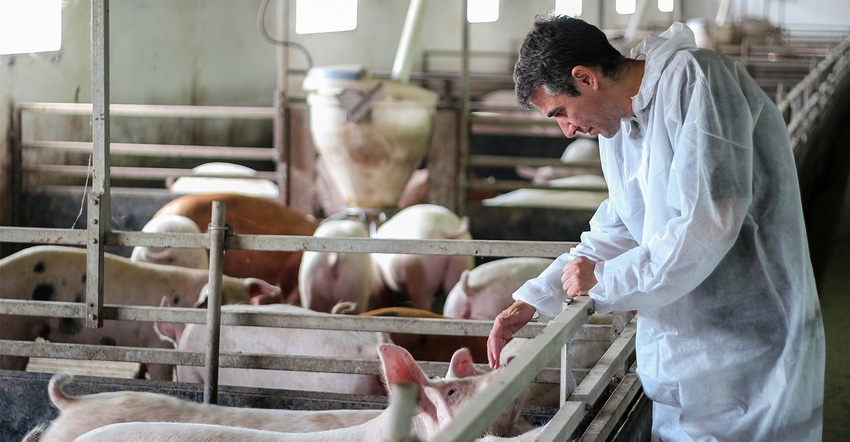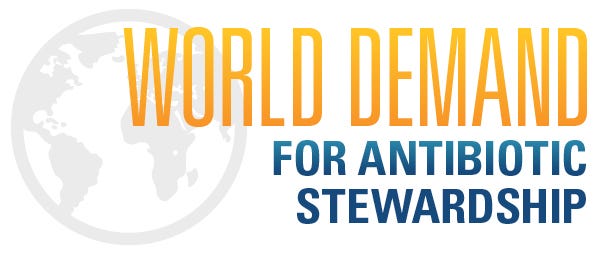Research targets antibiotic stewardship through improved gut health
Though a necessary form of treatment for disease and important tools for keeping livestock healthy, antibiotics are increasingly scrutinized by consumers demanding meat products raised without them.
August 1, 2018

Sponsored Content
Though a necessary form of treatment for disease and important tools for keeping livestock healthy, antibiotics are increasingly scrutinized by consumers demanding meat products raised without them. It’s a difficult convergence of factors for the animal nutrition and health sector, one that researchers are examining in the context of ways to change livestock health management and improve antibiotic stewardship so producers can continue to sustainably meet evolving market needs.
Sustaining the efficacy of antibiotics through good stewardship is a major target of both producer efforts and global research today. Antibiotics are not likely to be eliminated altogether from the animal nutrition and health sector, however. They’re effective in controlling otherwise costly and problematic diseases in livestock and poultry, but they must be used responsibly in order for that efficacy to be sustainable over time. Antibiotic stewardship also means careful and selective use of shared-class (human and animal) antibiotics that have potential resistance implications in human health.
“If we can reduce antibiotic use in humans and animals by using them only when they are necessary, we will decrease the level of antibiotic resistance globally. Antibiotics are important for all species of animals and humans when they have a bacterial infection, but they can be misused,” said Kemin Technical Service Manager for Swine, Tom Marsteller, DVM. “Stewardship of antibiotics is the goal, so they are used at the right time with the proper oversight, by a health care professional or veterinarian.”
World demand for good antibiotic stewardship
The concept of antibiotic stewardship is not new. It’s been on researchers’ radars for almost four decades, according to Marsteller, but it’s been a difficult issue upon which to act quickly, given the necessary coordination between industry and government.

Global organizations like the World Health Organization (WHO), World Organisation for Animal Health, National Institute for Animal Agriculture, U.S. Food and Drug Administration (FDA) and Centers for Disease Control are all targeting responsible antibiotic use through policy action.
Early last year, the FDA put into place the VFD policy stating the antibiotics critical to human health that are used in animal health must have oversight by the herd or flock veterinarian. This impacted several classes of antibiotics, including older products for routine use. The new policy still allows for certain classes of antibiotics to be used as growth promoters, but these five classes are not critical for human health concerns.
Those policies, others like them and livestock producers’ existing desire to cut back on antibiotic use to meet evolving consumer demand is moving the industry further down the road toward antibiotic stewardship improvements, Marsteller said.
“Veterinarians, animal producers, the animal feed industry, the animal pharmaceutical industry, feed ingredient distributors, academia, local, state and federal officials have made management changes and improved record-keeping on how and why they use antibiotics in animal production today. The result is that stewardship of antibiotic use in animals will be much improved going forward,” Marsteller said. “The initial approach was to better understand how to make these significant changes to the use and application of antibiotics. The next step is to determine what management changes at the farm level need to be made so that stewardship of antibiotics is common practice.”
Taking the next step
Antibiotic stewardship on the farm level starts with initial diagnoses and the steps immediately following them. Because they carry a relatively low cost and have such high efficacy against disease, antibiotics have historically been one of the first options to consider for treatment.
“It’s important to think about a disease or condition three or four times before deciding to utilize an antibiotic. Consider other options and maybe change some management practices first,” Marsteller said. “Since antibiotics were so readily available and unrestricted for so long, it was easy to use them economically, and they worked well. Today’s production environment and evolving consumer demands are changing that equation.”
A key part of the equation for transitioning away from abundant use of antibiotics is a group of organic acids and acidifiers that, when added to water and feed supplies, can help improve animals’ gut health so they’re fundamentally less susceptible to the diseases for which they’re typically treated with antibiotics. Acidifiers are not new to the livestock sector, but their use as a way to promote better gut health was shelved when antibiotics seemingly became the most cost-efficient disease management method.

“It’s really less about making the industry aware that these products are available, and more about how to use them for improved gut health,” Marsteller said. “Organic acids have been available for 30 years, but now there is renewed interest due to antibiotic reduction across the industry.”
Adapting to new management strategies
Adapting to new products and strategies sometimes may require a different mindset when it comes to managing animal health. With many common livestock and poultry diseases, maintaining good gut health is one way to prevent the diseases whose proliferation has been historically treated with antibiotics. And, good gut health is a direct reflection of the environment in which animals live – and the quality of their feed and water.

Maintaining safe, high-quality feed and water are goals of the Kemin Clean Up Program. If a livestock animal’s feed source is clean and free of contaminants, it minimizes the animal’s physiological stress and helps maintain better gut health. Improved intestinal integrity helps animals move potential contaminants through their systems with little to no negative impact, and combined with attention to other stressors like heat and environmental changes, animals are better able to feed and gain weight efficiently.
“The Clean Up Program’s goal is to make sure you have good quality feed and clean water. We have a water acidifier that will take bacteria and yeast out of the water supply and help manage for things like chronic enteritis and coccidiosis,” Marsteller said. “It’s different than treating with an antibiotic, but there are alternative ways to reach the same goal, and both the Clean Up Program and the overall Gut Health Triple Check program at Kemin do that.”
Moving from an antibiotic-based disease management strategy to one more centered around preventative work to bolster animal gut health is a considerable transition and may carry additional costs for the producer. On a broad scale, this could mean increased costs for the consumer, but Marsteller does not believe it will necessarily be a permanent cost increase or a hindrance to consumption.
Industry-wide stewardship efforts
Integrating organic acids, acidifiers and other tools into swine and livestock feed and water is not a silver bullet ridding the industry of common, profit-robbing diseases. And, it’s not an apples-to-apples “alternative” to antibiotics, Marsteller said. The compounds can help animals become less susceptible to common diseases, so treatment isn’t as frequent or necessary. But in this respect, they’re part of a larger, more integrated system.

“Organic acids, for example, are one tool in your toolbox. The effort really begins with biosecurity at your farm and high-health breeding stock, however. You want a sow herd that’s PRRS-negative and influenza-negative, for example. Eliminating PRRS and influenza is extremely difficult once you’ve got a problem with one,” Marsteller said. “If you start with animals that are high-health, you can make changes in your management practices to make sure that these pathogens don’t get into your clean sow herds.”
Reaching that point won’t make antibiotics a thing of the past, though. They’ll always be a part of the livestock industry, but management changes and a focus on gut health improvement will help producers continue to adapt and meet consumer demand.
“Animals get disease from bacterial pathogens and need to be treated appropriately in order to protect animal welfare,” Marsteller said. “But, we can improve biosecurity, animal management and gut health, among other things. Healthy livestock, good stewardship of antibiotics and a wholesome food supply are the ultimate goals for both producers and consumers.”
About the Author(s)
You May Also Like



